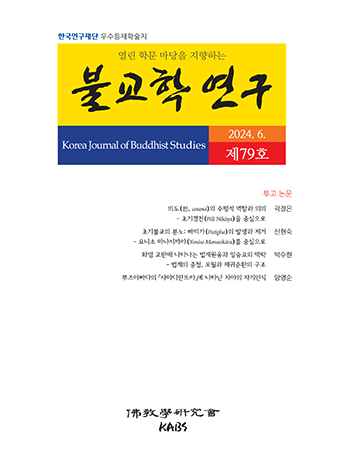Abstract
References
Sorry, not available.
Click the PDF button.
Information
Buddhism came to China widely accepted by the people by the 4th century and then it spread to Korea and Japan through the Chinese Buddhist literatures. By this the buddhism among the east asian countries became very similar and came to form a common Buddhist world. This trend became more strengthened in 7th century and the East Asian Buddhist world was completed by the end of the century. New buddhist thoughts made in Sui(隋) and Tang(唐) were simultaneously spread to Korea and Japan and the scholars of these countries paid not a little pains to fully understand the thoughts. Not a few monks moved across the borders of the countries and new thought and books were circulated with them. The interrelation among east asian countries' Buddhism was more strengthened after the unification of Korean three kingdoms by Shilla though it made political stress among the countries for a while. Shilla and Japan take much interest in the new trends of Chinese Buddhism and sent many monks to learn new Buddhism. Japan also sent not a few monks to Shilla to learn Buddhism.But this trend changed in 8th century when Chinese Buddhism showed the decline of its academic study. To the contrary to its vigorous development specially in the Faxiang school and Huayan school in the latter half of the 7th century, 8th century Chinese Buddhist study stagnated and the An-Shih(安史) rebellion during 750s deteriorated it much more. The decline of Chines academic Buddhism affected much to the east asian buddhist world. Since new theories and literature were rarely made in China, the interrelation among the countries became weaker. Even the exchange between Korean and Japanese Buddhism became very rare. As a result the academic Buddhism in east asian countries declined as a whole. On the contrary the practice Buddhism became influential in every country and replaced the academic Buddhism in not a long time.In China newly appeared Chuan(禪) became influential in the half of 8th century. In Shilla Uisang's school and Jinpyo's school which emphasizes the practice with onw's own body body strengthened their influence since 750s. The change in Japan delayed a little; Shingon school and Tendai school which emphasizes the rituals esoteric Buddhism became the main stream since 9th century. The trnasformation of Shilla Buddhism in 8th century can be clearly undersood in the context of this great changes in the east asian Buddhism.
Click the PDF button.
- Publisher :Korean Association of Buddhist Studies
- Publisher(Ko) :불교학연구회
- Journal Title :Korea Journal of Buddhist Studies
- Journal Title(Ko) :불교학연구
- Volume : 12
- No :0
- Pages :241~274


 Korea Journal of Buddhist Studies
Korea Journal of Buddhist Studies






